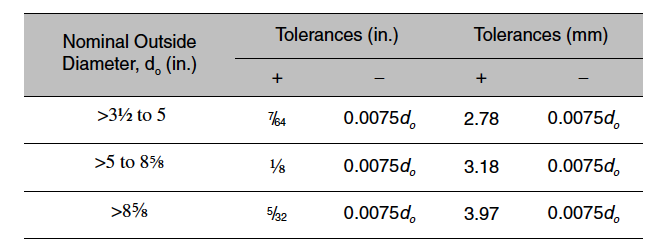Triumph had released the first official teaser video of the 2021 Speed Triple 1200 RS earlier this month. The footage included the exhaust note which was more than sufficient to give goosebumps to the enthusiast. The British motorcycle giant also announced that the new Speed Triple will be globally unveiled on 26 January 2021. While we were impatiently waiting for the date to arrive, the 2021 Triumph Speed Triple 1200 RS specs have been leaked!
14 Inch Casing Specs
The leaked image appears to have been of the new Speed Triple’s brochure. And the fact that it also contains a picture of the upcoming motorcycle that shows its side profile, cements the authenticity. It clearly shows that the 2021 Triumph Speed Triple 1200 RS would make a whopping 180 PS of max power at 10,750 rpm and 125 Nm of ground-breaking peak torque at 9000 rpm. We can also spot the seat height (830mm) of the motorcycle as well as its expected colour options (Sapphire Black and Matte Silver Ice).
Also Read: Nine new Triumph motorcycles to be launched in India by mid-2021
- With up to 14 teraflops of compute performance, 32GB of memory and 1TB/s of memory bandwidth, the MPX Module with Radeon Pro Vega II is a powerhouse. For more power, two Radeon Pro Vega II GPUs combine to create the Vega II Duo. With double the graphics performance, memory and memory bandwidth, it’s the world’s most powerful graphics card.
- Jan 14, 2020 Created with Sketch. CSI 3Part Specs. Created with Sketch. CSI 3-Part Specs - IWP Aurora Fiberglass Classic Exterior Folding Wall.
- Seller Description. This lot of 14' 115.53# HP Q125 SLSF R3 Casing is available as part of a surplus and is being sold to recover funds and storage space. Product: 14' 115.53# HP Q125 SLSF R3 Casing Quantity: 10,668.85 Feet Total Weight: 559 MTs Manufacturer: US Steel SMLS - 2011 MTRs provided with listing. Seller is firm on reserve price but will entertain close offers.

For reference, the previous model of the Speed Triple had 150 PS and 116 Nm. One of the reasons behind the increased power output of the new model is the higher displacement (from 1050cc to 1160cc). As they say, there’s no replacement for displacement, right?
The picture of the 2021 Triumph Speed Triple 1200 RS on the leaked image tells us that the motorcycle will also feature several new visual as well as mechanical changes. For example, the rear subframe appears to be a brand-new unit, the bodywork is fully revised, the engine casing is different, thus, pointing out that Triumph could have built an all-new motor from ground up for the 2021 Speed Triple.
2 3/4' MDF Casing Metrie Complete Colonial Casing Choose from Metrie’s vast assortment of moulding, trim and interior doors. Api casing dimensions casing casing nominal inside api roller cone fixed cutter size coupling weight diameter drift bit size bit size od od id id od od in. 13.375 14.375 54.50 12.615 12.459 12-1/4 12.250 12 1/4 12.250.
Well, these were some huge figures to swallow, right? Now, the longing for the new Speed Triple’s unveiling has become more unbearable! And we can’t wait for Triumph to bring the bike here in India.
For more Triumph news and other two-wheeler updates, keep checking IndianAutosBlog.com.

[Source: Asphalt and Rubber]
Tubing is a relatively small-diameter pipe that is run into a well to serve as a conduit for the passage of oil and gas to the field surface facilities for processing. Tubing must be adequately strong to resist loads and deformations associated with production and workovers. Further, tubing must be sized to support the expected rates of production of oil and gas.
Tubing Specifications:
Tubing is specified by grade, outer diameter, weight, and connection. API tubing grades correspond to casing grades with the exception that P grade tubing has a tensile strength of 105,000 psi and is referred to as P105.
Tubing comes with non-upset (NUE) and external upset (EUE) ends. EUE tubing is more common, because of the benefit that cutting threads into the tubing ends does not reduce the body strength.
NB: for ESP applications, if power cable clearance between the tubing and casing becomes an issue, NUE tubing should be considered.
Internal diameter (ID): is a result of the OD and the wall thickness, and it is used to calculate pressure losses and velocities.
The drift diameter: is the diameter of a 42” long mandrel that passes through tubing joint. It is a foremost parameter as it gives the maximum OD of any equipment to run through the tubing string.
Maximum outside diameter: it depends on the nominal diameter and the connection type. It is critical as it determines the strings size that we can run in a given casing.
Nominal size: is the outside diameter of the pipe body. The most used sizes are: 2-⅜”, 2-⅞”, 3-½” and 4-½”.
The tubing joint length: is the length of tubing joint including the coupling and excluding the pin thread. It is classified into two length range: range I: from 20 ft to 24 ft (6.1 to 7.32 m) long, or range II: from 28 ft to 32 ft (8.53 to 9.75 m) long. The length range must be chosen with care. It must be compatible with the hoisting and storage capacity of the mast of the rig used when running in hole the equipment during completion as well as later on during workover operations.
Nominal weight: is the average linear weight of the tubing, connection included. It is expressed in lb/ft. It determines the tubing wall thickness. The most common nominal weights are:
- 6# and 4.7# for 2-⅜”
- 4# and 6.5# for 2-⅞”
- 2# and 9.3# for 3-½”
- 6# and 12.75# for 4-½”
Steel grade: there are mainly two different types of steel used to manufacture tubing:
- API standard steels and grades for tubing: J55, C75, L80, N80, C90 and P105. The letter is a characteristic of the chemical composition and sometimes the thermal treatment. The number following the letter is the minimum body yield stress in 1000 psi and it is the minimum body yield stress guaranteed by the manufacturer.b
API standard as per API Spec 5 CT:
- Stainless steel, alloys, and special pipe:
When carbon dioxide and/or hydrogen sulfide are part of the produced fluids, it could necessary to use stainless steel, alloys, and special pipe. For example:
- 9 Cr is used for H2S applications.
- 13 Cr for CO2: 13% chromium is selected when there is no H2S in addition to the CO2.
- 22 Cr for CO2 + H2S: 22-25% chromium steel when the H2S partial pressure is not too high (some psi)
Connection, threads:

Tubings are screwed together through connections, which could be:
- by means of integral joint, the most common type of connection on small diameter pipe:
- by using a coupling (the most common connection), a collar with internal threads used to join two sections of threaded pipe.
API tapered triangular threaded connections:
API proposes two types NUE & EUE coupling:
- with an increased wall thickness and diameter (called Upset) giving better tensile strength. It is called an External Upset End (EUE):
- No increase in diameter at the end of the pipe body, It is a called Non-Upset End (NUE):
API threads have a taper of 6.25% and 8 to 10 threads per inch. They are triangular and rounded on top. The seal is made by grease trapped between the threads, which is sufficient for low-pressure oil wells.
NB: In addition to providing the seal for the connection, grease is used to lubricate the threads and protect them from corrosion.
Premium connections:
For premium connections, the seal is made by a metal to metal shoulder (e.g. VAM joint and Hydril joint), and sometimes by an elastomer or Teflon joint. Premium connections are preferred for gas wells, high-pressure wells, as well as for wells producing corrosive effluents.
Mechanical characteristics of tubing pipe:
The pipe run into the well is subjected to variable pressures and temperatures in addition to its own weight, and these will create variations in stress. The main mechanical characteristics of tubing pipe are:
- Tensile strength: the greatest longitudinal stress that a metal can bear without tearing apart.
- Collapse pressure: expressed in psi or MPa, it is the minimum differential pressure applied from outside, that the tubing withstand without permanent deformation.
- Burst pressure or internal yield pressure: is the internal differential pressure that will cause a tubing to fail.
Special tubing:
Special tubings (e.g. fiberglass tubings and internally coated tubings) are used to meet the particular corrosion resistance requirements due to the presence of hydrogen sulfide or carbon dioxide and water.
- Fiberglass tubing: it is used in low pressure, shallow wells and as a tailpipe below the squeeze packer or for setting cement plugs. They are corrosion resistant and easily drillable.
- Internally coated tubing: for highly corrosive effluent. The coating is damaged mechanically by tools run inside the production string.

14 Casing Specs Kit
Standards for Tubulars:
API and ISO standards for Tubulars are detailed in the article titled “Updated list of API and ISO Standards for Tubulars”.
Reference
14 Casing Specs Dimensions
You May Also Like…
